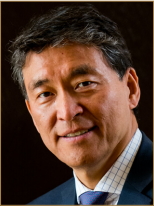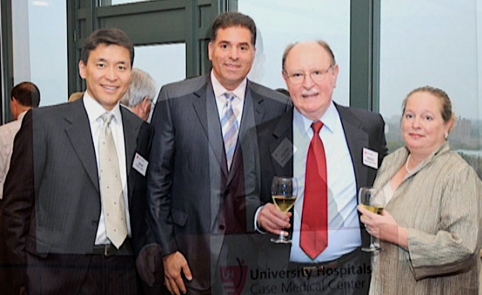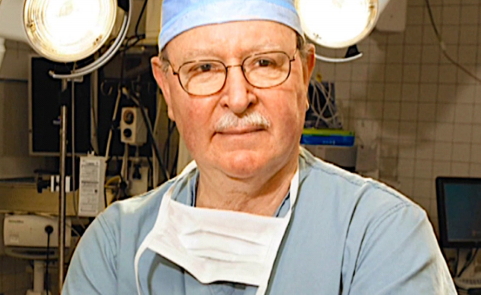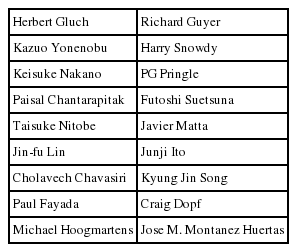Henry Bohlman (July 22, 1937–May 27, 2010)
Article information

"We are like dwarfs sitting on the shoulders of giants. We see more, and things that are more distant, than they did, not because our sight is superior or because we are taller than they, but because they raise us up, and by their great stature add to ours."
John of Salisbury: Metalogicon, 1159
On Thursday, May 27, 2010, Dr. Henry Bohlman had his usual wine with dinner, went to bed and passed during the night. His passing was a great loss to the many fellows and residents that had the good fortune to train with him, as well as to the patients whose spine health he restored. He was a true giant in the field who will live on in the memory of his trainees as well as his scientific work.
Dr. Bohlman’s father was an orthopedic surgeon at Johns Hopkins University who did seminal work on implant metallurgy by burying various metals in the ground to test their corrosion resistance. Dr. Bohlman, after graduating from the University of Maryland medical school, followed in his father’s footsteps by doing his residency in orthopedic surgery at Johns Hopkins Hospital. There he trained under Robbie Robinson, who described the Smith-Robinson approach to the anterior cervical spine. He initially had little interest in academic medicine but was chosen to spend a year doing research under an National Institutes of Health sponsored fellowship, as part of his training. Although he initially thought negatively about the extra year, it ultimately proved to be a pivotal experience for him. He spent the year at the Baltimore morgue investigating the pathology of fatal craniocervical injuries. This culminated in a landmark paper, “The Pathology of Fatal Craniospinal Injuries,” which propelled him to early fame as a cervical spine expert. He then spent 2 years in the Air Force before he moved to Cleveland, joining the faculty in the Department of Orthopedic Surgery at Case Western Reserve University. He built an internationally renowned spine unit that was regarded by many Orthopedic Department chairs as the top academic spine fellowship in the country. Dr. Bohlman rose to become arguably the most famous and highly regarded cervical spine expert in the world and surgeons from all over the world came to learn from him in Cleveland. He served as the President of the Cervical Spine Research Society from 1988–1989, as well as the President of the Federation of Spine Associations in 1994.
Academic surgeons know that not everyone who is famous is necessarily a great surgeon but anyone who trained with Dr. Bohlman knows that he was a great surgeon. He was kind and incredibly generous with his time to his patients. A typical office would consist of 8–10 patients – 3 to 4 new patients, all of them prescreened to be surgical, and the rest returns. What would take most surgeons 2–3 hours to do, he would do in 8 hours, giving his patients his undivided attention for 45 minutes to an hour each. He would see his postoperative patients at least once per year … forever. This allowed him to perform some of the best long-term follow-up studies in spine. He treated Saudi kings and princes, famous athletes, innumerable VIPs and was a true doctors’ doctor.
As an academician, he was a prolific author, publishing 121 peer-reviewed articles and 45 book chapters. He lectured the world over and was a Visiting Professor, course lecturer or paper presenter on 445 occasions. He was well-known as a meticulous researcher who maintained extraordinary records of every patient he ever operated on. In his attic, he had copies of every radiologic study ever done on every one of his patients, along with their medical records and thousands of Kodachrome slides of the most relevant studies. His collection was a treasure trove of valuable data that allowed him to publish seminal studies that are still quoted today.
He won many honors for his achievements. In 2008, his former fellows raised more than half of the $2.3 million for the Henry H. Bohlman MD Endowed Professorship in Spine Surgery, with the rest matched by Case Western Reserve University. He was the recipient of the North American Spine Society Leon Wiltse Award for “contributing greatly to the art and science of spinal-disorder management through service to NASS.” He is an inductee to the John Hopkins Society of Scholars for Distinguished Contributions in the Field of Scholarship. He was also the recipient of the Association of Bone and Joint Surgeon’s Nicolas Andry Award for Lifetime Achievements in Spine Surgery.
As a teacher, he was kind and patient and beloved by his trainees. He never raised his voice in anger, even when his fellows made serious surgical mistakes. He was generous with his time, as well as his wine. He had a family farm in Arnold, Maryland, outside Annapolis, that he very generously would allow any of his trainees to use at any time. As a renowned oenophile, he called his annual fellow reunions at the American Academy of Orthopedic Surgeons meeting the “Wine and Spine Society,” whose motto was in vino veritas. He was quoted as saying, "I tell them that I know they came for a spine fellowship, but they also get an oenology fellowship." Befitting such an oenophile, he maintained a prized wine cellar with fabulous Bordeaux, Champagne and Burgundy that he would share with the fellows at dinners he hosted at his home in Shaker Heights, once culminating with a tasting of Chateau d’Yquem. The famous wine critic, Robert M. Parker Jr., was an honorary member of the Wine and Spine Society and joined the group on occasion, once hosting the group for a vertical wine tasting in Baltimore. In all, he trained 81 fellows from the United States and 35 foreign fellows. The vast majority of his trainees became academics, with trainees of their own to pass on his teachings to.
So long as we, his fellows, and our trainees live, his memory and teachings will live on in us.

Author with Alex Ghanayem, MD, Dr. & Mrs. Bohlman.

Dr. Henry Bohlman


